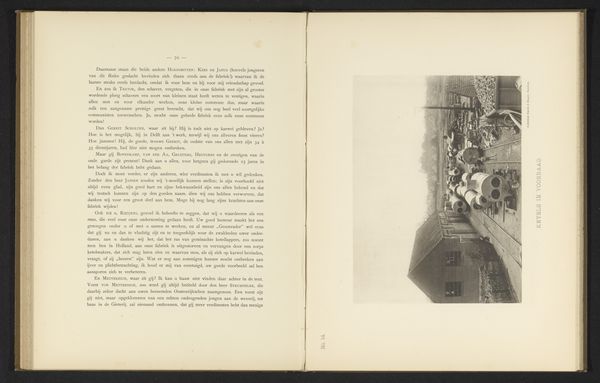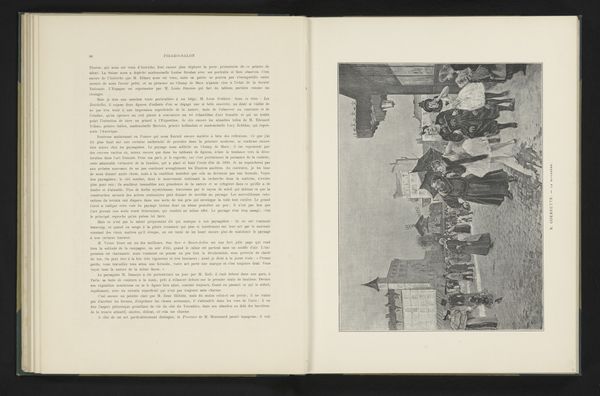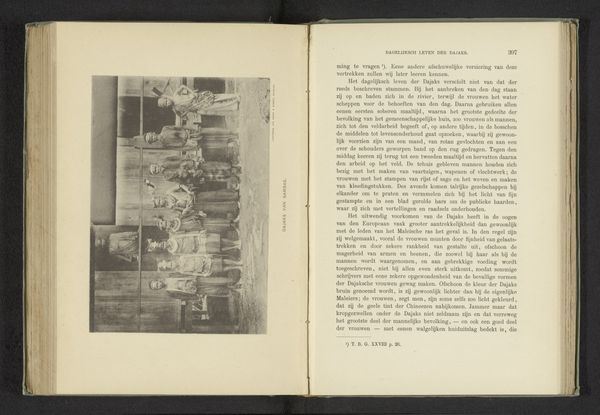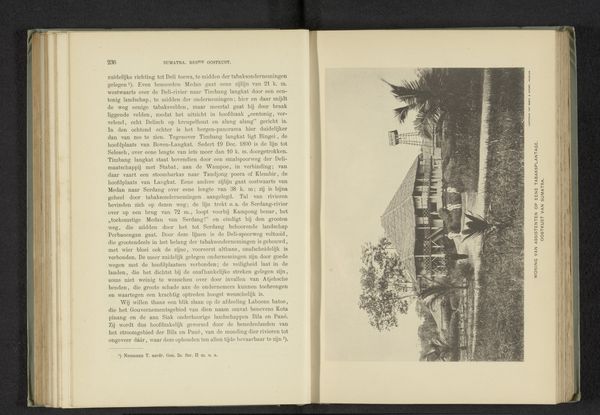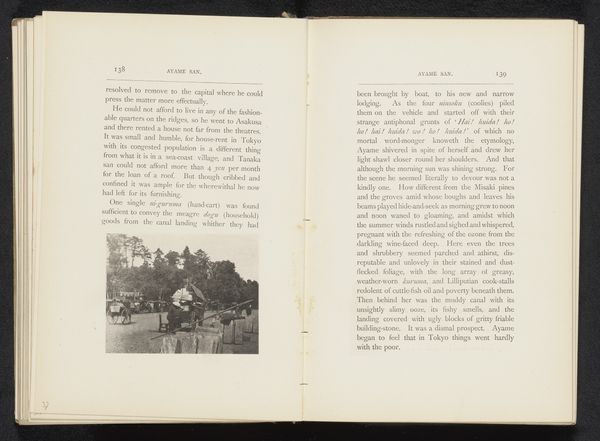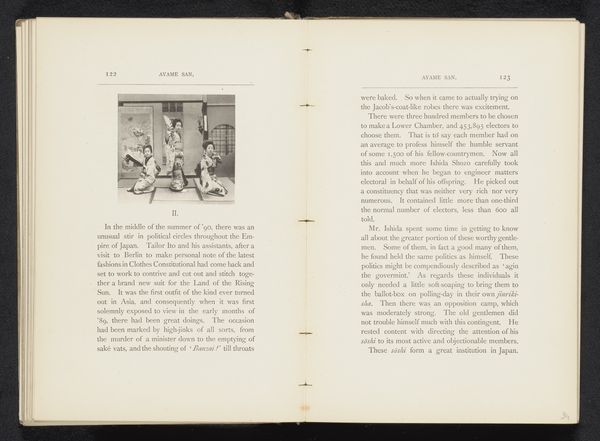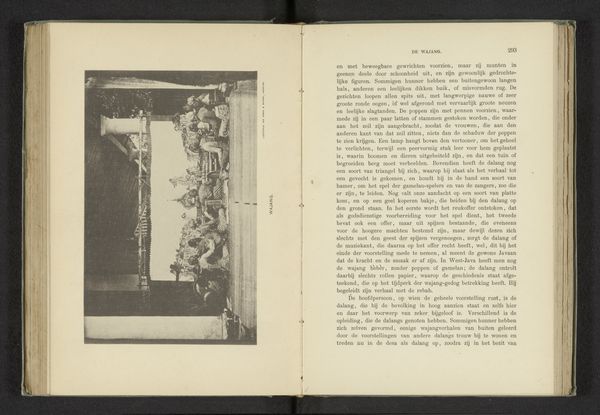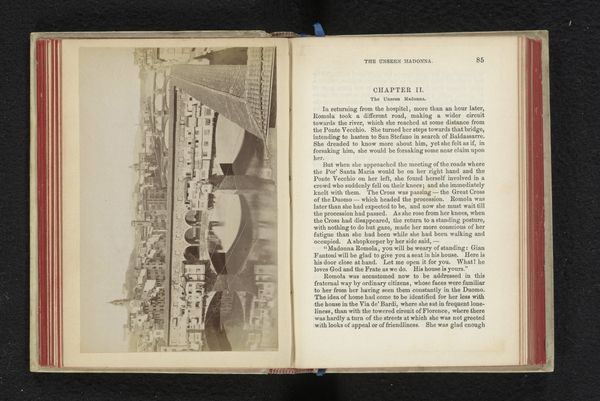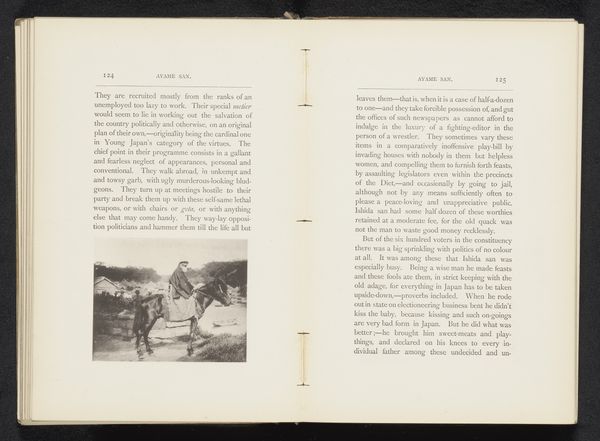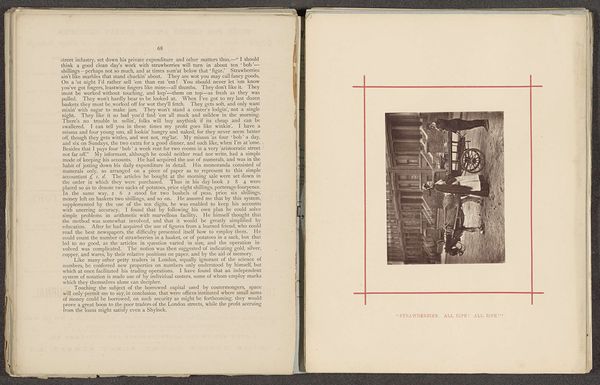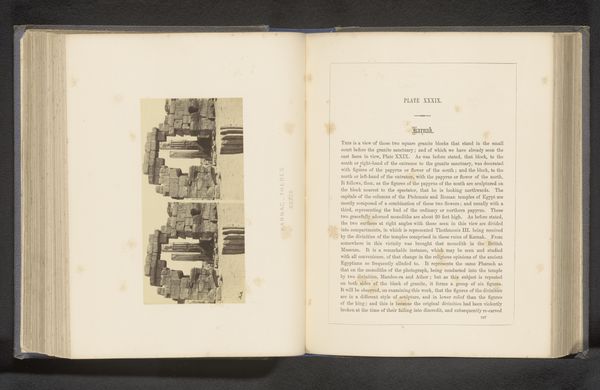
Reproductie van een schilderij van een plein met kamelen te Algerije door Jean-Léon Gérôme before 1901
0:00
0:00
print, paper, photography, engraving
#
paper non-digital material
#
script typography
# print
#
landscape
#
paper
#
photography
#
orientalism
#
genre-painting
#
academic-art
#
paper medium
#
engraving
Dimensions: height 220 mm, width 325 mm
Copyright: Rijks Museum: Open Domain
Curator: This print is a reproduction of a painting by Jean-Léon Gérôme, depicting a scene of a square with camels in Algeria, made before 1901. It's currently housed here at the Rijksmuseum. What's your immediate reaction? Editor: Stark. Almost oppressive. The rigid architectural details dwarf the human figures, casting a rather melancholic pall. The camels, despite being the ostensible subject, seem almost secondary to the geometry. Curator: The choice to represent this scene through print adds another layer. How do you read the symbolic choice? Editor: The choice of black and white tones certainly accentuates the dichotomy I noticed: life against architecture, nature versus humanity. Consider camels: beasts of burden and crucial to North African desert existence, contrasted against harsh geometry which here means Islamic authority, civic order and governance in this specific landscape. It almost feels allegorical; the humans reduced in stature to the great forces at play that define North Africa. Curator: Gérôme was known for his Orientalist paintings, and his work, while celebrated for its detail, has been critiqued for perpetuating colonial perspectives. It’s important to consider the power dynamics inherent in depicting "the other." The setting of Algeria in particular calls up the historical context of colonialism, so that stark symbolism really seems intentional here. Editor: Right, the setting becomes another character, a stage where the drama of power and representation plays out. Perhaps the camels themselves serve as a symbol, beasts burdened not only by physical loads, but also by the weight of cultural expectation and colonial exploitation? There is even a hint of a possible religious iconography within the wider history and legacy of the Roman empire and their long occupation and involvement in North Africa and current day Algeria. Curator: Absolutely. Analyzing how artists frame different cultures sheds light on the ideologies that shape artistic production and consumption. By interrogating these perspectives, we can confront uncomfortable truths about the ways art has been used to reinforce systemic inequalities. Editor: Seeing this, and knowing all of that… I'm glad that these old symbolic constructs and colonial era depictions are continually investigated today from all intersectional points of view. I find it valuable to examine artwork using various lenses to extract cultural meanings and reveal encoded, complex stories from bygone eras.
Comments
No comments
Be the first to comment and join the conversation on the ultimate creative platform.
